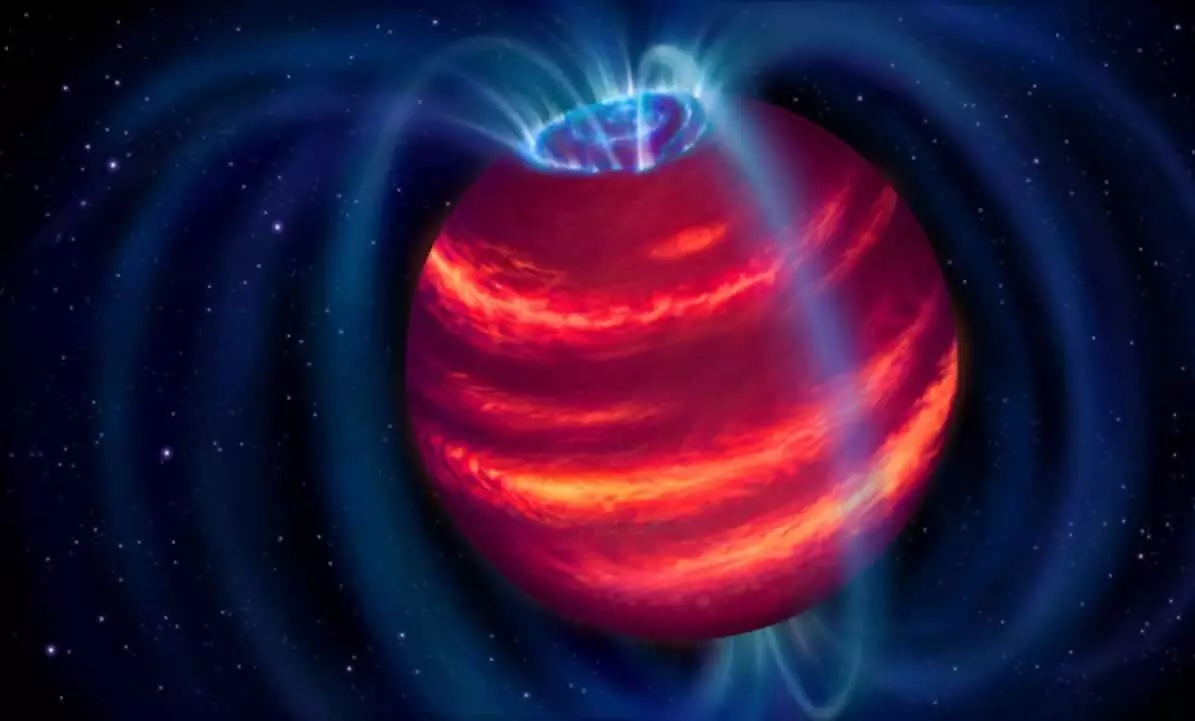
Discovery of super-planet by radio telescope
text_fieldsArtist’s impression of the discovery dubbed, Elegast. The blue loops depict the magnetic field lines. (Photo credit: ASTRON/Danielle Futselaar)
A collaboration of Low-Frequency Array Radio (LOFAR) telescope, International Gemini Observatory and NASA's Infrared Telescope Facility have confirmed the discovery of a "super planet" named Elegast. This would be the world's first detection of an element sited 212 light-years away using a radio telescope.
BDR J1750+3809, named Elegast by the discovery team, is characterized as cold brown dwarf, also called "super planet" or "failed star." The usual method of studies of these elements was by detection on infrared sky surveys and further analysing on training radio telescopes. However, the latest finding by a radio telescope validates the astronomers can detect interstellar objects that are too cold to be picked up by infrared telescopes, according to the University of Hawaii.
Brown dwarfs are substellar objects with masses approximately 13 to 80 times that of Jupiter. However, they do not acquire enough mass to trigger sustained nuclear fusion of ordinary hydrogen into helium in their cores like normal stars.
"The infrared spectra of brown dwarfs reveal their atomic and molecular fingerprints. Each class of brown dwarfs has a unique fingerprint. We have taken the spectra of over 50 of them, which reveal their physical and chemical properties," said UCLA astronomy professor Ian S. McLean to NASA.
The first discovery of failed stars dates back to mid-1990s, though hypothesized to exist in the 1960s. With the advent of infrared detecting devices, thousands of brown dwarfs are said to be identified.
The latest research was presented in the paper Direct Radio Discovery of a Cold Brown Dwarf and appeared in The Astrophysical Journal Letters on November 9.






















